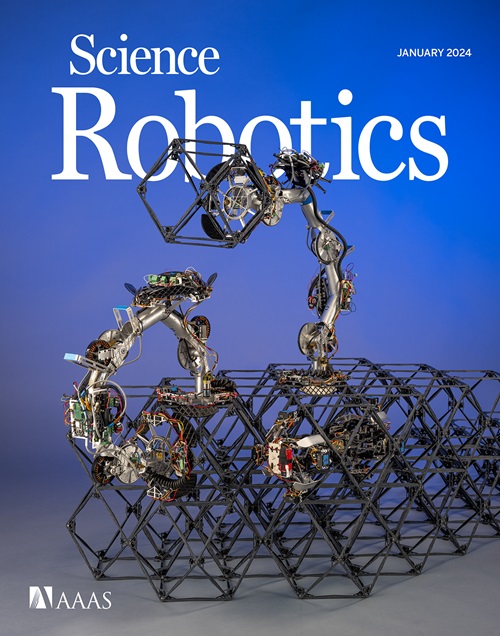使用样本有效主动学习的脚踝外骨骼控制的用户偏好优化。
IF 26.1
1区 计算机科学
Q1 ROBOTICS
引用次数: 0
摘要
实现增强型外骨骼广泛成功的一个挑战是准确地调整控制器,以提供与佩戴者的协作帮助。通常,控制器参数被“调整”以优化生理或生物力学目标。然而,这些方法是资源密集型的,而通常只能实现单个目标的优化。事实上,外骨骼用户体验可能源于许多因素,包括舒适性、疲劳性和稳定性等。这项工作介绍了一种方便地调整外骨骼控制器的四个参数以最大化用户偏好的方法。我们的总体策略是利用佩戴者在内部平衡佩戴系统的体验因素。我们使用进化算法来推荐潜在的参数,这些参数通过神经网络进行排序,该神经网络使用先前收集的用户偏好数据进行预训练。具有最高偏好等级的控制器参数被提供给外骨骼,佩戴者以实时反馈作为强制选择比较进行响应。与随机生成的参数相比,我们的方法能够以平均88%的精度收敛于佩戴者偏好的控制器参数。用户偏好设置在43±7次查询中稳定。这项工作表明,可以利用用户的偏好,使用简单直观的界面实时调整部分辅助脚踝外骨骼,突出了将下肢可穿戴技术转化为我们日常生活的潜力。本文章由计算机程序翻译,如有差异,请以英文原文为准。
User preference optimization for control of ankle exoskeletons using sample efficient active learning
One challenge to achieving widespread success of augmentative exoskeletons is accurately adjusting the controller to provide cooperative assistance with their wearer. Often, the controller parameters are “tuned” to optimize a physiological or biomechanical objective. However, these approaches are resource intensive, while typically only enabling optimization of a single objective. In reality, the exoskeleton user experience is likely derived from many factors, including comfort, fatigue, and stability, among others. This work introduces an approach to conveniently tune the four parameters of an exoskeleton controller to maximize user preference. Our overarching strategy is to leverage the wearer to internally balance the experiential factors of wearing the system. We used an evolutionary algorithm to recommend potential parameters, which were ranked by a neural network that was pretrained with previously collected user preference data. The controller parameters that had the highest preference ranking were provided to the exoskeleton, and the wearer responded with real-time feedback as a forced-choice comparison. Our approach was able to converge on controller parameters preferred by the wearer with an accuracy of 88% on average when compared with randomly generated parameters. User-preferred settings stabilized in 43 ± 7 queries. This work demonstrates that user preference can be leveraged to tune a partial-assist ankle exoskeleton in real time using a simple, intuitive interface, highlighting the potential for translating lower-limb wearable technologies into our daily lives.
求助全文
通过发布文献求助,成功后即可免费获取论文全文。
去求助
来源期刊

Science Robotics
Mathematics-Control and Optimization
CiteScore
30.60
自引率
2.80%
发文量
83
期刊介绍:
Science Robotics publishes original, peer-reviewed, science- or engineering-based research articles that advance the field of robotics. The journal also features editor-commissioned Reviews. An international team of academic editors holds Science Robotics articles to the same high-quality standard that is the hallmark of the Science family of journals.
Sub-topics include: actuators, advanced materials, artificial Intelligence, autonomous vehicles, bio-inspired design, exoskeletons, fabrication, field robotics, human-robot interaction, humanoids, industrial robotics, kinematics, machine learning, material science, medical technology, motion planning and control, micro- and nano-robotics, multi-robot control, sensors, service robotics, social and ethical issues, soft robotics, and space, planetary and undersea exploration.
 求助内容:
求助内容: 应助结果提醒方式:
应助结果提醒方式:


